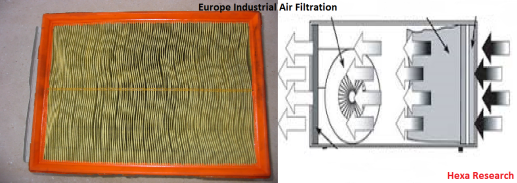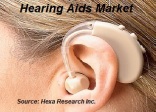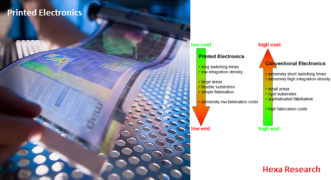Aerosol Propellants Market worth USD 11 billion by 2024
The global aerosol propellants market size is projected to reach USD 11 billion by 2024. The development of high-quality propellant formulations with enhanced product dispensing capacities can drive this industry during the forecast period (2016-2024). In addition, widespread adoption of various aerosol-based personal care and household products could also positively influence the market. This trend is mainly observed in developing countries, like India, Thailand, etc. Moreover, rising technological developments resulting in the production of superior propellant combinations may stimulate market demand.
The growth of the Aerosol Propellants Market depends greatly on the availability of raw materials, such as crude oil and natural gas. Moreover, the cost of the product depends on the prices of crude oil and natural gas. High production of natural gas in Asia-Pacific and North America could boost the demand for aerosol propellants in the years to come. Additionally, greater technological initiatives resulting in the production of high-quality cans that are aesthetically appealing may augment the demand for these cans. This, in turn, can propel the global market.
For Market Research Report on “Aerosol Propellants Market” Visit – https://www.hexaresearch.com/research-report/aerosol-propellants-market
The global Aerosol Propellants Market is categorized as products, applications, and regions. Based on products, the market is divided into Dimethyl Ether (DME) & methyl ethyl ether, hydrocarbons, carbon dioxide & nitrous oxide. Methyl ether & DME can grow at a CAGR of 6% from 2016 to 2025. This attributes to the superior properties exhibited by these components, such as no harm to the ozone layer and low global warming potential. The use of aerosol propellant gasses, such as carbon dioxide & nitrous oxide can increase considerably in the near future. This is because these gasses cause minimal environmental damage and ensure greater stability.
Applications comprise household, personal care, food, medical, paints, and automotive & industrial. The personal care segment is anticipated to grow at a healthy CAGR of over 3% during the estimated years. This is because of rising popularity of mousses, hair sprays, and deodorants. Demand for beauty products in Central & South America and in Asia-Pacific could fuel product demand in the years to come. In addition, the popularity of hair styling products and shaving foams may propel market growth. One of the key factors driving the global Aerosol Propellants Market is the widespread adoption of personal care products worldwide.
The household segment can expand considerably during the forecast period because of increased usage of floor cleaners and insect sprays. The automotive segment can register a growth rate of 5% during the forecast period.
Geographically, the global Aerosol Propellants Market is segmented into Asia-Pacific, North America, Europe, Central & South America, and Rest of the World. Asia-Pacific could witness the highest growth on account of rising consumer disposable incomes and rapidly changing lifestyles. Europe is projected to contribute to over 32% of the overall revenues. This owes to the high demand for cans in the personal care & household application segments. Widespread application of the product in automotive paints & cleaners may boost the market in the forecast period.
Prominent companies operating in the global aerosol propellant market are Honeywell International Inc.; Crown Holdings Inc.; Royal Dutch Shell Plc.; E.I. DuPont de Nemours and Company; and Aerosol Gas Ltd. These manufacturers invest considerably in research & development (R&D) of superior propellant formulations. Companies undertake R&D activities in order to increase their market shares in the long run.
Oil Spill Management Market To Surpass $125 Billion By 2024
The global oil spill management market size is projected to grow beyond USD 125.62 billion by 2024. Growing incidents of oil spilling in the past along with severe safety and environmental policies are likely to propel the market over the forecast phase (2016-2024). Also, escalating pipeline and seaborne shipping of crude oil and chemicals could positively impact the market further.
The market is fragmented by technologies, techniques, applications, and regions. Technologies are Pre-oil spill and Post-oil spill. Pre-oil spill segment is divided into double-hull, pipeline, leak detection, blow-out preventers, and others. Double-hulling was the dominant segment in 2015 with highest shares.
For Market Research Report on “Oil Spill Management Market” Visit – https://www.hexaresearch.com/research-report/oil-spill-management-market
Marine trade registers for a majority of petroleum products and natural gas transportation. Mounting demand for crude and petroleum products oil in Europe and Asia Pacific will boost the maritime trade growth further. Post-oil spill segments are mechanical, chemical, biological, and physical. Chemical and mechanical containment and recovery are the techniques used in the industry.
By applications, the market can be sliced into pre-oil spill management a post-oil spill management. Pre-oil spill covers onshore and offshore sectors. The offshore segment recorded the maximum shares in 2015. It consumed approximately 70% of the total demand in that year.
Post-oil spill management also includes of onshore and offshore segments. In 2015, onshore post-oil spill sector was valued close to 60% of the total market demand. Regions such as Norway, U.S, Mexico, Canada, U.S., China, and Nigeria have observed well blowouts and occurrences of pipeline breakdowns. This could be accredited to huge market diffusion in past
Main regions in the market encompass North America, Europe, Asia-Pacific, the Middle East and Africa (MEA), and Central & South America. North America was the leading market for pre-oil spill management. It was estimated at 40.1% of total demand in 2015. This region will potentially face lucrative demand due to production activities and increasing oil & gas discovery. Pre-oil spill management shares in Asia Pacific will gain over USD 21,540 million by 2024. It is mounting at a healthy CAGR of 4.2% in the review phase.
Profits to determine hydrocarbon reserves noticeably and supportive government initiatives in the form of fiscal support in India and China could drive the regional demand. Top-most companies in the global oil spill management market include OMI Environmental Solutions, Skim Oil Inc., American Green Ventures Inc., and Spill Response Services.
Flooring Market Analysis, Market Size, Application Analysis, Regional Outlook, Competitive Strategies, 2016 To 2024
The worldwide flooring market is projected to attain above USD 330 billion in revenue by 2024. Flooring with a durable nature will attract huge sales for the market over the forecast period (2016-2024). Demand for insulation will give it a much-needed boost. The market is expected to achieve a sales volume of 240 billion square feet, at a nearly 6% CAGR during the forecast period. It was reported to accumulate a demand of 161 billion sq ft in 2015.
Consumers have moved on from traditional flooring solutions to eco-friendly solutions like glass, cork, bamboo, linoleum, rubber, and polyester terephthalate (PET) berber. Changing consumer preferences in accordance with their lifestyle as well as demand for insulation will be the future drivers of the market.
For Market Research Report on “Flooring Market” Visit – https://www.hexaresearch.com/research-report/flooring-industry
The market is split by products, applications, and regions. Seamless flooring, soft coverings, resilient, and non-resilient floorings are products of the flooring market. Soft coverings comprising of rugs and carpets are also called as textile coverings. This segment had occupied almost half the market, dominating the market with over 35% demand shares in 2015.
Resilient flooring encompasses a mixture of fillers and binders. They are waterproof coverings available in vinyl, wood, rubber, cork, and linoleum. Nonresilient flooring is available in terrazzo stone, ceramic tile, brick, clay tile, and concrete tile. These floorings are low maintenance in nature and require only mopping and dusting.
Applications of the market involve commercial, industrial, and residential. Residential accounted for 50% market demand. This made it the largest application of the flooring market in 2015. This major share can be attributed to renovation and construction projects. Industrial applications encompass aviation hangars, automotive industry, refineries, and manufacturing plants. Education, sports, retail, healthcare, hospitality & leisure, and corporations constitute as commercial market applications.Regions covered under the market are Europe, North America, Asia-Pacific, and RoW (Rest of the World). Asia Pacific will lead the flooring market over the next six years owing to residential and non-residential construction projects. It accumulated over 45% market demand in 2015. Europe will enjoy a stable demand on account of providing innovative flooring solutions.
Regions covered under the market are Europe, North America, Asia-Pacific, and RoW (Rest of the World). Asia Pacific will lead the flooring market over the next six years owing to residential and non-residential construction projects. It accumulated over 45% market demand in 2015. Europe will enjoy a stable demand on account of providing innovative flooring solutions.
Reputed participants involved in the flooring market include Shaw Floors, Mannington Mills Inc., Gerflor, Armstrong, and Mohawk. The market is highly competitive in nature and driven by technological innovation.

Pharmacy Automation Devices Market to Witness 7.4% CAGR till 2020
The pharmacy automation devices market is anticipated to expand at a CAGR nearly 7.4% during the forecast period (2014 to 2020). Revenues may surpass USD 8 billion by 2020. Mechanical processes that are used in the handling and distribution of medications are known as pharmacy automation. Pharmacies employ automation in order to enhance cash flows and bring down medication inventories. Devices that facilitate these tasks are known as pharmacy automation devices. High incidence of medical error deaths is one of the key drivers of this industry.
Computerized physician order entry, EHR (electronic health record), and clinical decision support system are some of the commonly used devices. These help monitor patients on a regular basis so that their health conditions are better understood. High investments in research & development and growing popularity of medical automation may augment industry growth over the forecast period. Other market drivers are need for minimal medical errors, greater consciousness about advanced pharmacy, and high population growth. Furthermore, demand for minimally invasive surgical procedures with integrated medical automation could propel the industry in the forthcoming years.
In-Depth Market Research Report on “Pharmacy Automation Devices Market” Visit – https://www.hexaresearch.com/research-report/pharmacy-automation-device-industry
Applications, end-use, and regions are the three parameters based on which the global pharmacy automation devices market is categorized. Based on applications, the segments are automated medication dispensing systems, automated medication & compounding systems, automated storage & retrieval systems, table top tablet counters, and automated packaging & labeling systems. Packaging & labeling instruments mainly include deblistering machines, sealers, printing solutions, and fillers & sealers.
Automated medication dispensing systems enable computer controlled storage, tracking, dispensation, and the efficient recording of medical works. This segment held the highest market share in 2013. Unlike small sized hospitals that face budgetary constraints, highly established & large hospitals mainly adopt automated medication dispensing systems. Dispensing cabinets help healthcare practitioners to provide medications in a systematic manner and keep a record of the same in the overall system.
Retail pharmacy and hospital pharmacy are the two main end-users in the overall industry. Owing to robust investments, the hospital pharmacy segment may witness remarkable growth till 2020. It is sub-segmented into central pharmacy automation solutions, pharmacy robots, barcode medication dispensing, and point-of-care automation solutions among others.
Geographically, the worldwide pharmacy automation devices industry is divided into Asia Pacific, North America, Europe, and Rest of the World. In revenue terms, North America dominated the overall industry in 2013. Regional drivers are technological developments, the need for minimal medical errors, and a rapidly growing aging population. Asia Pacific is projected to be the fastest growing region in the forecast period. Factors that could positively impact the region are high income levels and greater awareness about the benefits of medical automation.
Prominent players in the global Pharmacy Automation Devices Market are Innovation PharmaAssist Robotics, Pyxis Pharmacy Automation Systems, McKesson Corporation, CareFusion Corporation, Accu Chart Healthcare, and Swisslog Holding Ltd. TCGRx, a Wisconsin based company dealing in pharmacy automation declared the development of PillBot™ in November 2016. PillBot™ is a pharmacy automation device that enables the filling of multi-dose and unit-dose cards in addition to pouch packaging. It can efficiently package medicines in blister formats as well as in pouch formats. The product will soon be launched this year.
To get free sample request on:
https://www.hexaresearch.com/research-report/pharmacy-automation-device-industry/request-sample
Europe Industrial Air Filtration Market Size Is Forecast To Reach USD 1.69 Billion By 2020
Industry Overview
Europe industrial air filtration market size is forecast to reach USD 1.69 billion by 2020, growing at a CAGR of over 7% from 2014 to 2020. The industry is expected to be primarily driven by the enforcement of occupational health and safety regulations. Stringent government norms are likely to spur the industry growth over the forecast period. IPPC (Integrated Pollution Prevention and Control) with sectoral directive has setup the emission limit standards for large combustion plants to reduce air pollution.
The dust collectors market was valued at USD 219.7 million in 2013, and is expected to reach USD 365.9 million by 2020 growing at an estimated CAGR of 7.7% from 2014 to 2020. Several manufacturing activities are focused on lean manufacturing and eliminating waste within the manufacturing processes.
Browse Detail Report With TOC @ http://www.hexaresearch.com/research-report/europe-industrial-air-filtration-market/
The industrial air filtration industry is anticipated to experience gains, owing to formulation of EN 779:2011, European standard for specific air filters. The standard is likely to eradicate filter performance issues. For instance, electrostatic charged synthetic filters tend to discharge rapidly within few weeks of its operations, and their ability to filter deteriorates substantially over time.

In addition, an efficient system helps in augmenting safety as well as health aspects and thus aids in ensuring supply reliability. It also facilitates in energy optimization by reducing energy consumption and minimizing the risk of loss of production. Revenue from the power sector was valued at USD 188.8 million in 2013, and is expected to reach USD 317.9 million by 2020, growing at an estimated CAGR of 7.9% from 2014 to 2020. The market is expected to witness considerable growth as air filtration systems help handle toxic, hazardous, and radioactive gas streams.
High cost involved in installation is projected to hamper the industry growth over the forecast period. In addition, high maintenance cost and energy consumption rate is expected to challenge the Europe industrial air filtration market. HEPA filters are estimated to witness significant growth owing to commercial benefits offered namely augmented plant revenue, better yield, low labor as well as component cost. These are also used in applications concerning biological, chemical and radioactive material. Furthermore, mist collectors are projected to provide potential opportunities owing to its unique property of filtering dust and wet emission from food & bevrage and metals industry.
Product Overview
HEPA filters were valued over USD 240 million in 2013. It is estimated to witness highest growth owing to is large scale usages in several applications requiring high collection efficiency of submicron particulate matter. It is likely to grow at a CAGR of over 8% from 2014 to 2020.
Request A Sample copy of This Report @http://www.hexaresearch.com/sample/298
Baghouse Filters accounted for more than 22% of the overall market share in 2013 and is expected to grow at a CARG of over 7.5% from 2014 to 2020. The growth can be attributed to its capacity to handle large air volume as well as heavy dust loading capacity involved in cement & food processing industries.
Application Overview
Metals sector was accounted for over 20% of the overall Europe industrial air filtration market share in 2013. It is anticipated to exceed USD 370 million by 2020, growing at CAGR of over 7.5% from 2014 to 2020. Surge in the sector can be addressed to air-borne suspensions removal capability of the filter.
Food sector was valued over USD 220 million 2013. It is projected to witness highest growth rate of around 8% from 2014 to 2020 due to sanitary, cross contamination and food handling regulations in the industry.
Regional Overview
Italy industrial air filtration market was valued over USD 170 million in 2013 and it is estimated to grow at over 7% from 2014 to 2020. It is likely to exhibit considerable growth owing to growing pharmaceutical industries in the region.
Germany occupied the highest industry share in 2013. It is expected to grow at a CAGR of 8.5% from 2014 to 2020. Spur in the region can be addressed to flourishing use of dust collectors in metal processing industry along with increasing HEPA filter use in food and beverage industry.
Competitive Market Share
Europe industrial air filtration market share is highly consolidated by top three industry participants accounting for more than 50% of the overall industry share in 2013. Donaldson Company Inc is anticipated to hold key position owing to high R&D spend, sales, new product development and marketing activities. Key industry players include Clarcor Inc and Camfil among others.
Browse Full Report @ http://www.hexaresearch.com/research-report/europe-industrial-air-filtration-market/
- ← Previous
- 1
- 2
- 3
- Next →
 Rapid technological advancements are taking place in this market. The most recent innovations being the incorporation of Bluetooth and the introduction of aesthetically appealing, 100% undetectable, waterproof hearing aids. All these advancements have been optimistic for the growth of the market as the new enhanced, cost-effective product features are augmenting a number of users of these devices.
Rapid technological advancements are taking place in this market. The most recent innovations being the incorporation of Bluetooth and the introduction of aesthetically appealing, 100% undetectable, waterproof hearing aids. All these advancements have been optimistic for the growth of the market as the new enhanced, cost-effective product features are augmenting a number of users of these devices.